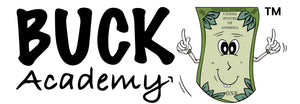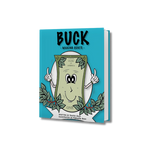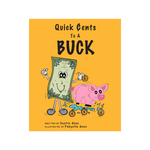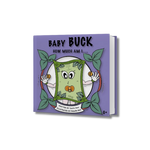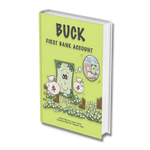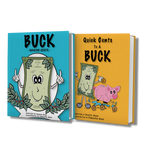You have no items in your shopping cart.
Preschoolers and Kindergarteners
- Use a clear jar to save money
Piggy banks are a great idea, but unfortunately, you aren’t able to see the money you are putting into your bank. Children are visual learners, they need to be able to see and touch to learn. Day 1 they contributed $2 to their jar, and today they contributed another $1.50, now they see they have 3 $1 bills, and 2 quarters, as opposed to just $2 they had before.
- Set a good example
Lead by example, for little eyes, are watching you! The best way to teach our littles about money is to lead by example. If your child sees you slapping down the plastic for dinner and groceries, they will notice this behavior. Don’t make money a negative topic, instead, use it as an opportunity to teach.
- Teach them that stuff costs money
Life costs money, as adults, we know that, right? Now is the perfect time to start teaching your youth about the VALUE of money. Say your child wants a toy at the grocery store, and it costs $10. Instead of just telling them that the toy costs $10, go grab the money with them from their jar to pay for it instead. Have them hand the money to the cashier to pay for the toy they want. Emulate this with your youth to make a lasting effect on the importance of cost, and the value money holds.
Elementary school to middle school
- Point out “wants” vs “needs”
Wants vs. needs teaches our children a valuable lesson. Your child is old enough to understand by this age how to make decisions. Help them incorporate finances into that equation by comparison. “If you buy this video game now, you have the money left to buy this pair of shoes.”.
- Give commissions not allowances
Commissions are a good way to teach your youth that money is earned, not just given. The famous term we all heard as children, “Money doesn’t grow on trees”, makes a lot more sense now that we too are adults, doesn’t it?
- Avoid buying impulsively
This is the hardest lesson of all. Avoiding impulse buys. We know how badly our girls want a new dress or the hot new thing, we also know how much our boys love video games, and technology. And at this age, our children are aware of the technique of capitalizing on our wallets if they want something bad enough. It’s okay to say “No”, it’s actually quite healthy to say no more, and yes less. This teaches our youth that money again is not expandable. Providing another opportunity to teach. If they still want that new dress or new video game, give them a 24-hour wait rule before they make a purchase, and use their hard-earned commissions to do this.
- Teach the beauty of giving
We all want to raise kind humans. And this is the perfect age to start crafting a charitable heart. Sit down with your youth and take this opportunity to have them select a nonprofit or charity organization of their choice to donate to on a regular basis. Whether it is $4 a week, or a % of their weekly commissions, help them set up a budget that allows them to give back. Soon, they will see how great of a positive impact their charitable actions have made the lives of not just others, but them too.
Teaching the Teens
- How to be content
The years of teen angst is now upon us, can you believe it’s happened so fast? It’s time to teach our children the beauty of contentment. And it all starts at the heart. In a world that is digital, media and the lives of others are at the fingertips of our kids. They spend most of their days scrolling through Facebook, Instagram, and other social media platforms and begin to compare their lives to those they see.
‘Sarah’s mom bought her a new car – why can’t we do that?’
‘Caleb’s dad just got a boat, they have been at the lake every day. I wish we could do that.’
Teach your children the value of living in the moment, and being happy with the lives they have. While maybe their car isn’t the newest model, it still runs and get’s them where they need to go. While you may not have a boat for weekend family outings, you can still do fun things together as a family, without it. Humble hearts make for responsible adults, inside and outside of their personal finances.
- Time for their first bank account
It’s time to open your youth’s first bank account! How exciting is that? Taking this step teaches your youth the responsibility of not only having money, but also managing their own. You can set up a simple bank account for them under a custodial account until your teen reaches 18 years of age. Open a savings account attached to their account, and have them put a % of their earnings into that account every month.
- Save for college
College years are approaching, and if you hadn’t already been saving for college, now is a great time to start. By this age, your youth is starting to develop an idea or particular interest in a profession. Some may even have an idea of where they would like to attend college. How will that be paid for? Have your youth match your efforts. If you put in $100 a month, have them do the same.
- Review pros and cons of credit cards
In today’s world, there isn’t much you can do without having good credit. Take this opportunity to teach your youth now the importance of having and maintaining a good credit score. A small starter credit card with a low balance limit would be optimal for a teen working on establishing credit. Help your youth understand credit cards, the debt that is owed, interest, and other facets.
- Help them create a budget
Creating a budget is a top priority when dealing with personal finances on any level. Sit down with your teen and work out a budget based on their income and lifestyle. Breaking down the needs, savings, and wants. For example:
Tommy makes $200 a week at his part-time job. He only pays for his cell phone, gas, and insurance on his car. The total cost of those 3 NEEDS is $175 for the month. In total, he makes $800 a month. Which leaves him with $625 a month. Where does the rest of that money go?
- What is compound interest?
We know, you can hardly get your teen to brush their teeth someday’s, none the less learn about compound interest, finances, and budgeting right? But this is such an important aspect of personal finances.
What is compound interest? Essentially it is the interest that you earn on interest.
Learn more about compound interest by visiting: Investor.Gov
- How can your teen make a buck?
In our previous blog, “Ways for your youth to make a buck this summer” we go over multiple ways that your child can earn extra cash this summer.
A few great ideas for your teen:
- Clean houses
- Do yard work
- Help neighbors
- Walk dogs
- Babysitting
- Pet sitting
- Run errands
- Be a mother’s helper
Options are endless! Go make a buck or two today!
